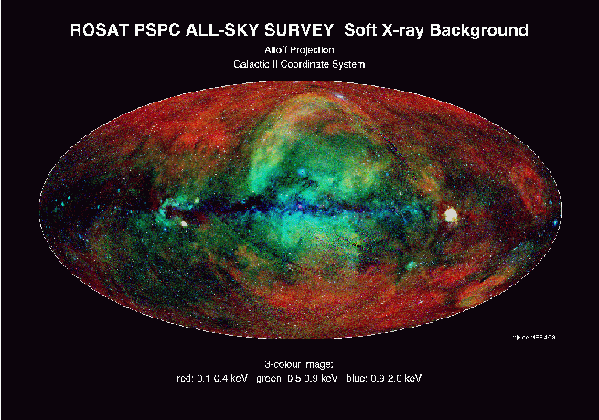
X-ray telescopes usually perform "pointings," where the telescope is pointed at some astrophysical object of interest. This of course means that only sources which already look interesting for other reasons, or known to be so from a previous observation are observed. All sky surveys are useful for discovering the unexpected as they scan the entire sky over a large range in energy.
 |
| The soft (low energy) X-ray background as seen by the ROSAT satellite in the 1990s. (Image courtesy ROSAT) |
The most well known of these is the ROSAT All Sky Survey (RASS) carried out over 6 months between 1990 and 1991. This was the first survey taken with an X-ray telescope which could image. All previous surveys could only measure the total count rate from a given "pointing" and so point and extended sources were not distinguishable. It detected more than 60 000 X-ray sources over the whole sky. The image above shows the 50 000 sources detected in the first round of the data processing. The map is in galactic coordinates, so that the top and bottom parts show the `extragalactic' X-ray sky, i.e., the regions we see when looking away from the plane of the Milky Way which runs horizontally through the centre of the above image. The colours from red to white represent the average energies of the photons emitted by the different sources: red stands for low energies corresponding to relatively cool temperatures of several 100 000 K, whereas the detection of `white sources' indicates the presence of gas at temperatures in excess of 20 million K.
BACK: X-ray Research Topics UP: X-ray Research Topics NEXT: Stars & Supernovae